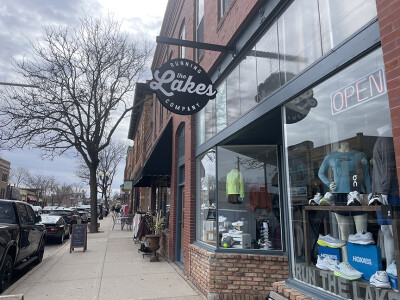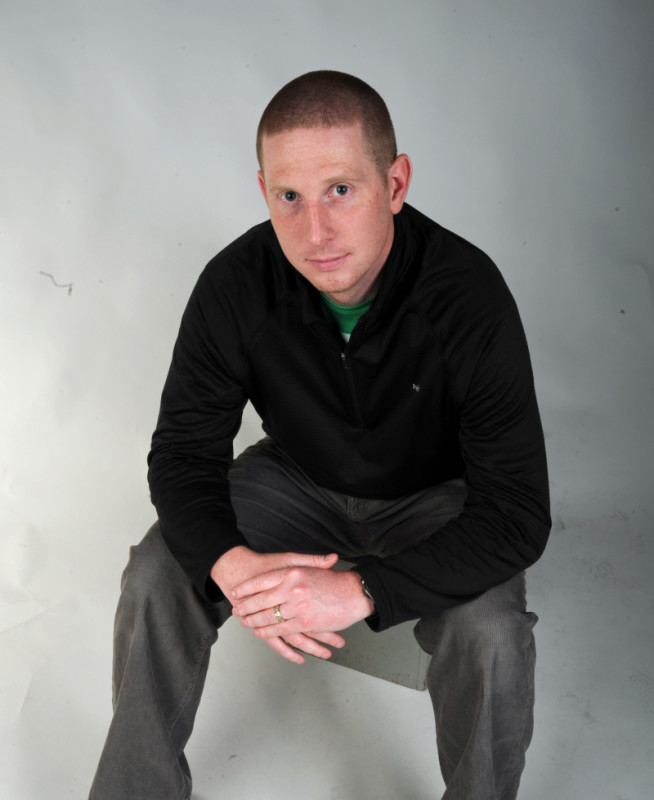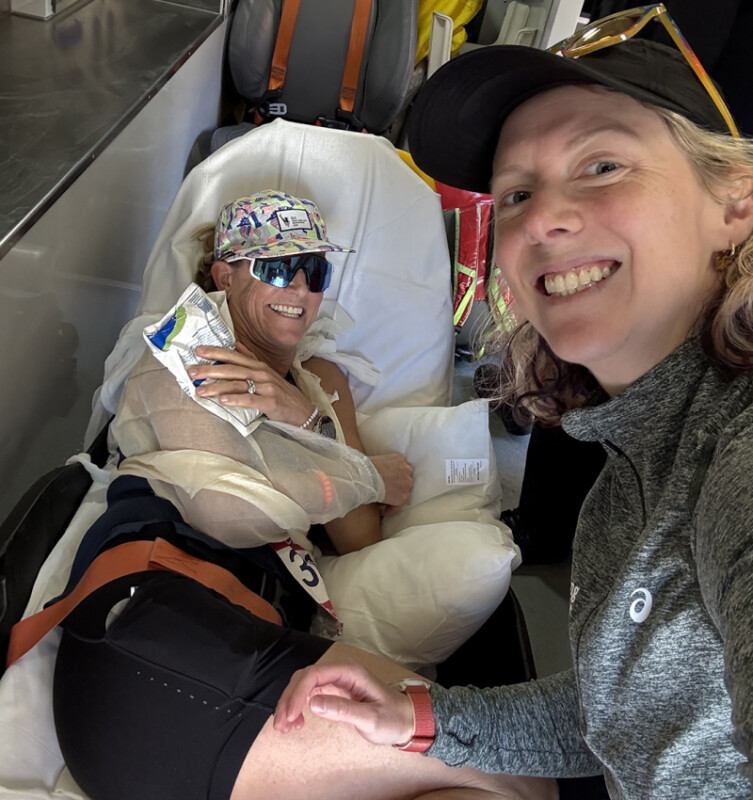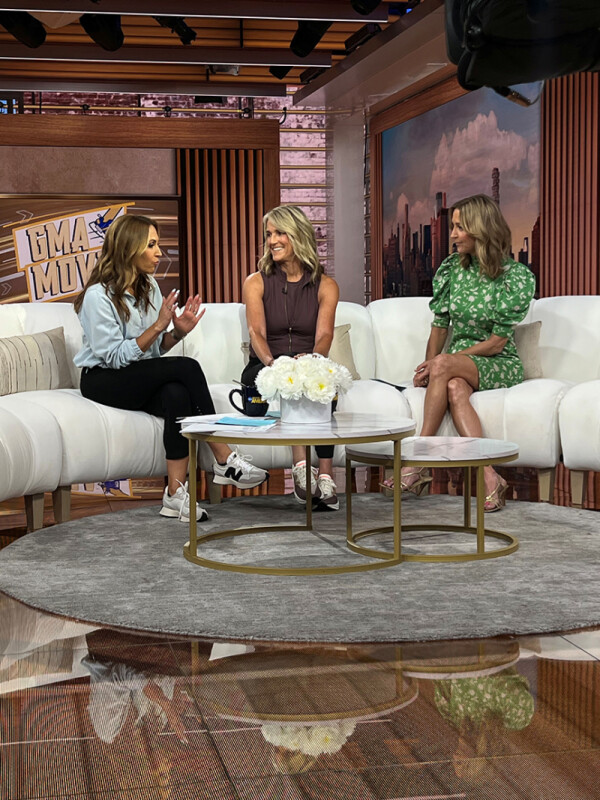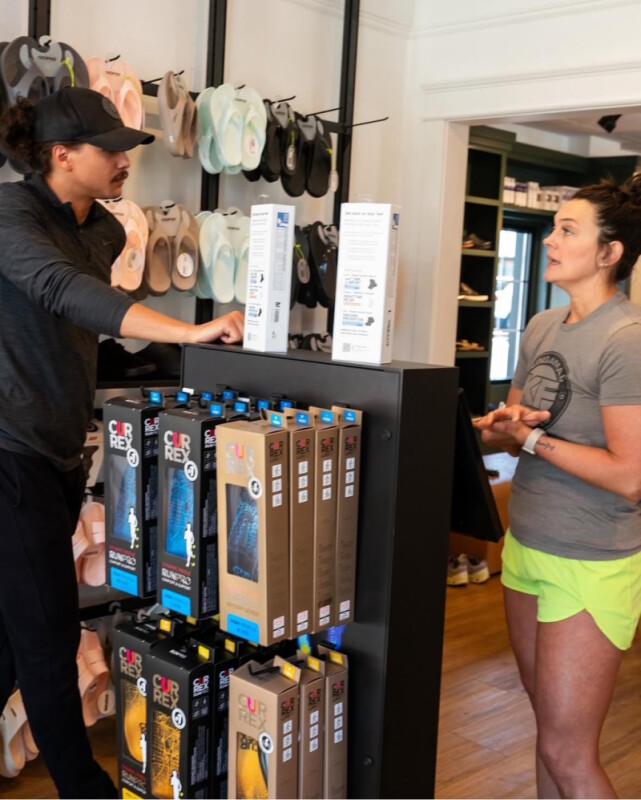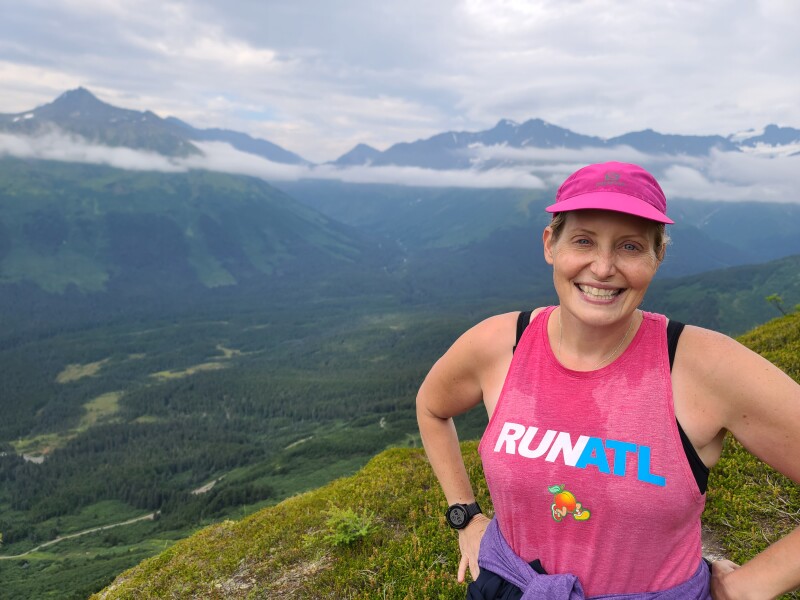After six years, Pete Miller knew something had to give at The Lakes Running Co., his run specialty shop in Excelsior, MN.
As time passed, however, Miller began wondering about an alternative store design and merchandising setup, one boldly eliminating running retail’s most sacred space: the shoe wall.
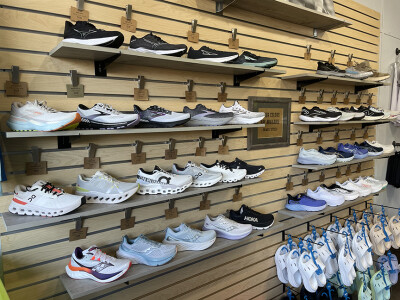
While the Lakes’ two existing shoe walls presented footwear in a clean, logical fashion, Miller came to identify three challenges with the arrangement.
First, presenting footwear on the 8-by-8-foot slatwall panels commanded valuable real estate. It forced apparel racks onto the showroom floor, which cluttered sightlines and impacted how customers traveled the retail space.
Second, with the women’s shoe wall sitting at the front of the store, women rarely ventured further back to seek out bras, shorts, tanks and other items. “We gave them what they came for, but not much else,” Miller says of his female clientele.
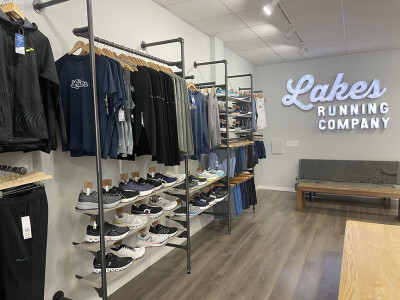
Miller’s ambitious thought: Ditch the slatwall and the traditional shoe wall in favor of a product presentation intermixing footwear and apparel. He scoured the web for examples and was surprised to find nothing in the run specialty world.
“I saw a lot of great shoe walls, some amazing displays, but nothing that integrated shoes and apparel,” he says.
Miller forged ahead with his novel idea. He investigated shelving options and decided to add multiple Econoco Pipeline units to achieve his desired look.

Miller purchased the Econoco units and accepted offers of help from customers and friends. He began the remodel on a Monday in early February, the store’s slowest time of the year. The work included removing the three slatwall sections, scraping off glue, sanding and painting as well as assembling the additional pipe fixtures. The store never closed, as Miller installed temporary plastic barriers to keep things tidy.
The project took four days, and Miller pegs the total at about $1500 for fixtures, paint and other supplies.
“It was surprisingly quick and inexpensive, though I certainly benefited from some free labor,” he says.
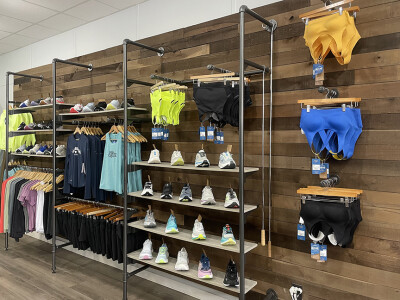
Miller says the customer experience at Lakes has not changed much since the remodel. Men’s and women’s footwear still have their own respective domains alongside gendered apparel. Shoes, meanwhile, remain grouped by brand to provide cohesiveness.
“It’s still a conversation with the customer just as it’s always been, but the shoes don’t need to be lined up side by side to do this,” he says.
Miller feels the new setup encourages customers to see an overall set of solutions and compelling products rather than only a solitary product category. Women, for instance, now see a varied selection of bras, tops and bottoms directly alongside footwear, often the principal driver of visits to run specialty shops.
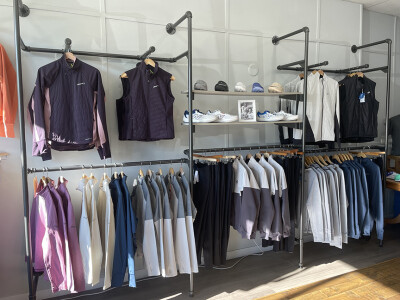
In March, a third pipe fixture arrangement at The Lakes featured a limited selection of court shoes as well as sandals and winter apparel preparing to head out of season. The fixture’s modular nature empowers Miller to alter this section at his discretion.
“We could just as easily shift this section to highlight trail if we wanted,” he says, adding that he also has room to expand his new merchandising setup if he wants to incorporate more product.
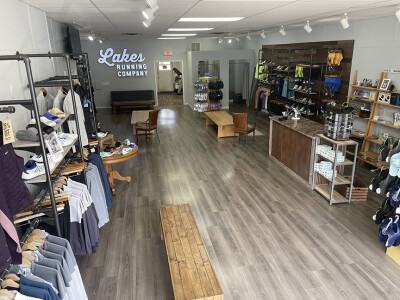
Miller calls The Lakes’ new setup a more effective use of space and cleaner setup. Customers now enter the storefront and have open sightlines to everything the store stocks. “I had six years where I didn’t think about how difficult it was to see products,” Miller says, urging his run specialty peers to “consider how customers see and experience your space.”
While Miller says it’s too early to tie the new store design to sales figures, he is optimistic the fresh arrangement will stimulate apparel sales, a historically tricky nut for running retailers like him to crack.
“This setup isn’t the norm, but we think it’s going to pay off,” he says.
